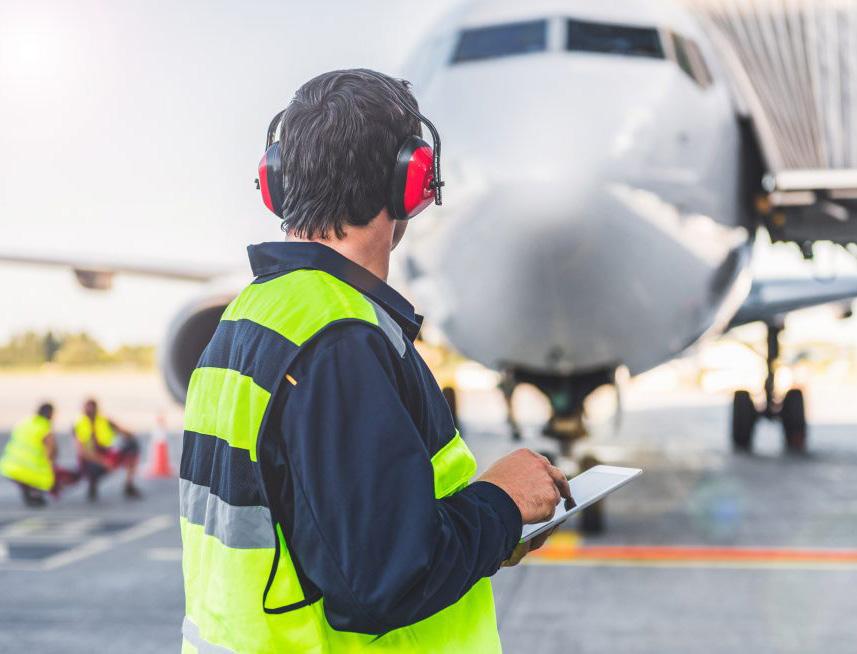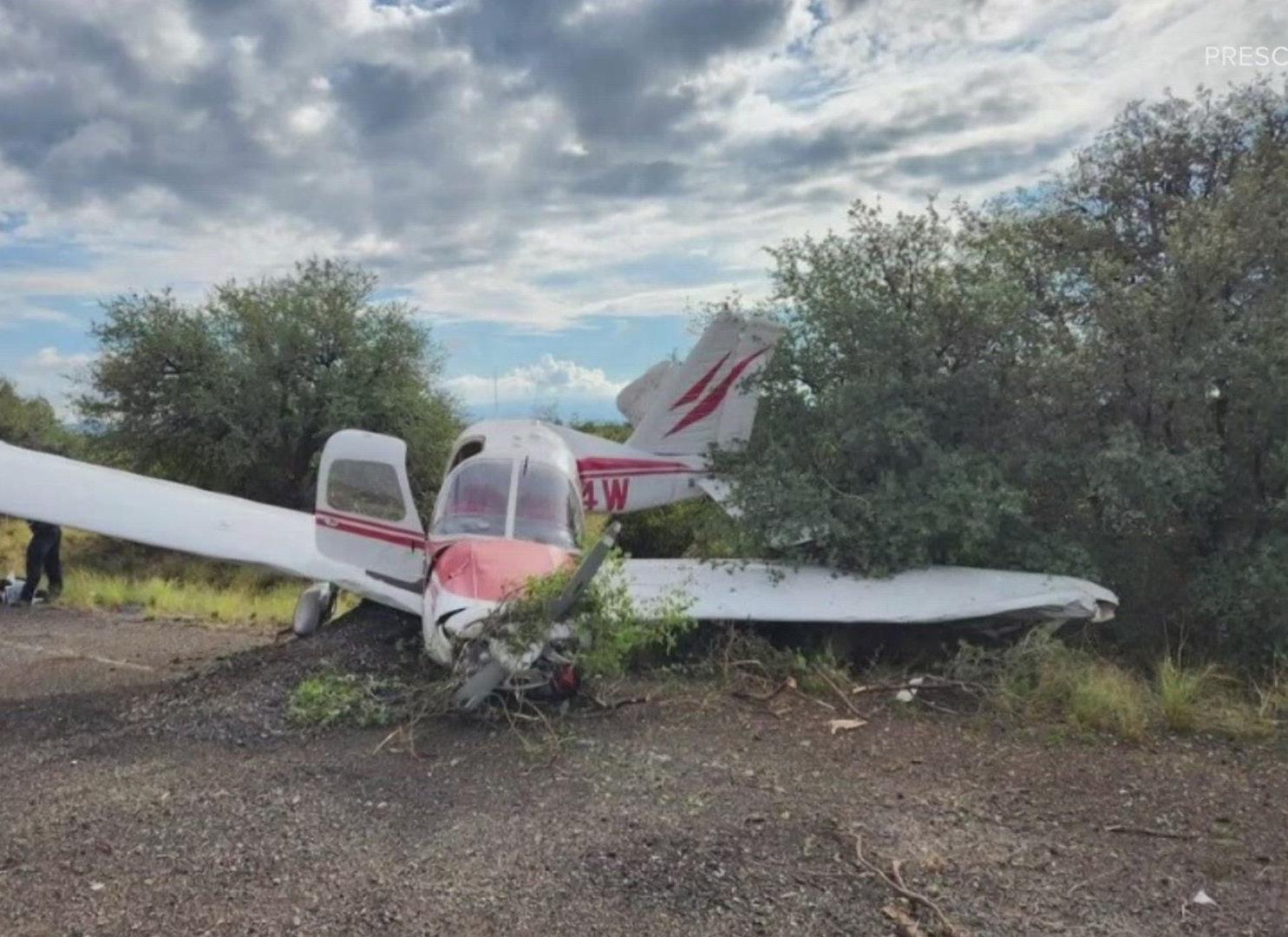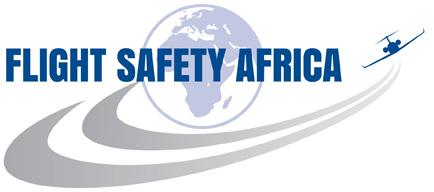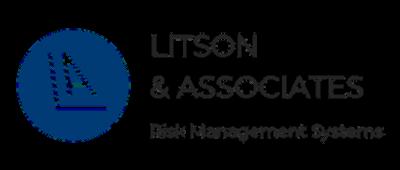







THE AIRLINE INDUSTRY HAS ACHIEVED the incredible feat of being the safest mode of travel. It is far safer than riding a bicycle – or even walking. But general aviation (GA) is lagging far behind.
The good news is that, thanks to safety management, GA is getting safer, despite the exposure every minor incident gets on social media.
AOPA argues that the “proliferation of general aviation accident analysis through social media distorts GA’s safety performance, resulting in more attention being focused on fewer accidents. More people are more aware than ever of our accidents, so it feels like we’re experiencing more. We’re not.
“People are less aware of the 26 million hours a year we fly safely. That’s more than 30 million


safe takeoffs and landings. There’s no news, no dramatic analysis over non-events. Routine doesn’t drive clicks—those defibrillators in constant demand to resuscitate social media channels.”
“The AOPA Air Safety Institute reluctantly entered the social media analysis arena…. out of frustration with the growing popularity of inchoate analysis by self-appointed doyens hunting “clicks” and prioritizing drama over fact. In some cases, the speculation from these analyses was flat out wrong and bordered on the absurd, but the posts drew clicks.
access the exceptional training and the freedom in this country to fly GA. Foreign governments send their most critical pilots here for training to fly their most precious dignitaries and fill their militaries.”
AOPA presents interesting numbers on GA from the USA – it points out that GA is tied to $247 billion in economic activity and 1.2 million jobs. GA is a vital pipeline for skillsets of all types in military and airline aviation, but especially so for pilots. People travel from around the world to
GA encompasses a broad segment of activity. If it’s not military or airline flight activity, it falls into the general aviation category, which includes everything from light sport aircraft to Boeing Business Jets in activities ranging from international, transoceanic travel to local flights in and out of unprepared fields.
Fatal accidents must be assessed in context of the amount and diverse types of GA activity. Much of GA flying is recreational. Pilots flying to remote bush strips only accessible by GA aircraft; or pilots flying to a small airport just to drop into a café for the famous $100 dollar hamburger.

Often pilots fly just to be airborne, pootling about, with no particular destination in mind. Flying is freedom to most GA pilots, the sensation of flight rejuvenates them mentally and emotionally in ways indescribable to those not enraptured by the experience.

AOPA points out that GA’s safety performance over the last several decades is impressive. “We’ve dropped our fatal accident rate (the traditional measuring stick) to 0.73 per 100,000 flight hours, a historic record. That’s less than half of what it was in the mid-’90s. All evidence points to an ongoing, steady decline in the rate and fewer accidents amid more GA activity in the future.
Analysts have compared GA safety to that of riding a motorcycle. Both are about skill, proficiency, and management of risk by the individual operator. If you are deficient in any of these areas, the consequences can be severe. The saying about no old bold pilots can also be said about maniac motorcyclists. If you are skilled, proficient and take risk and safety seriously, you will be safe.
This is the basis for this Safety Feature. We use it as an opportunity to showcase the key safety solution providers. Specialist companies like Flight safety Africa and Litson and Associates are doing excellent work in key fields such as aviation safety training, providing an advisory service for aviation safety, and quality advice to aircraft and airport operators, and software solutions.
Safety Management Systems (SMS) are the heart of a safe culture simply because if an operator has a fully functional SMS, the risk in flight operations will be reduced to As Low As Reasonably Practicable (ALARP). This is an attainable goal that will transform the GA industry.
j

The Flight Safety Group provides global, fully certified, Fixed Wing
AS PART OF THE global Flight Safety Group, Flight Safety Africa provides an extensive range of auditing, training and inspection services and advice to offshore and onshore operators across the African continent and beyond.
Flight Safety Africa adheres to International Quality Standards and is ISO9001:2015 Approved by Lloyds Register.
The company specialises in Aviation Safety and Compliance auditing. The audit scope covers both operators and air worthiness.
After 20 years in the aviation safety business, Flight Safety has incomparable experience and expertise. Services include:
• Aviation Safety Audits (fixed-wing and rotary)
• Risk Management
• Risk Assessment
• Systems Analysis
• Accident and incident investigation
Offshore and onshore crew training is a further speciality. As required by the International Organisation for Gas and Petroleum (IOGP), Report 690, the compoany’s offshore courses are OPITO Equivalent – following the OPITO Standard for HDA and HLO.
Flight Safety Africa offers training at the client’s facility, or Cape Town, South Africa. Courses are also available on line:
• Helideck Inspector Awareness (HIAT)
• Helideck Operations Initial training (HOIT
• Helicopter Emergency Response Team Member (HERTM)
• Helicopter Emergency Response Team Leader (HERTL)
• Helicopter Refuelling
• Helicopter Landing Site Officer (HLSO)
• Offshore Meteorological Weather Interpretation (OMWIT)
For further information or to book and audit or crew training: visit: www.flightsafteyafrica.com email: info@flightsafetyafrica.com or call: +27 83 263 4439

‘Vision’ is a hard thing to define...- Mike Litson

Litson & Associates is an independent Aviation Safety advisory & Quality auditing, training and software systems company based in Somerset West, South Africa We recently asked Mike Litson to share what inspired his interest in Aviation Safety...
In 2007 Mike and Karen Litson started Litson & Associates (L&A) and shortly after Litson & Associates Risk Management Services (RMS) from offices situated at the Cape Town International Airport
What inspired your interest in aviation safety?
ML: My interest in Aviation Safety was not because of any one ‘eureka’ moment, but rather a progressive interest during my career This started way back during my young days as a pilot in the Rhodesian Air Force, when I was the Squadron ‘Safety Officer’ and aviation safety was important for two reasons - to save lives, of course and to save aircraft, which we could not replace.
In 1985, my wife Karen and I moved to settle in Cape Town and in 1989 I joined the Court Helicopters Group as Safety Manager. I held this position for 9 years, then moving to manage Court Flight Operations for the next three years Based on this experience I was offered a position as Safety Manager for the Royal Flight Oman, which position I held for five years based in Muscat, Oman
Prior to returning to Cape Town, which had always been our intention, we spent one year in the UK, where I worked as an Aviation Safety Auditor, carrying out audits for the Oil & Gas sector worldwide


What was your vision for the company when you started L&A and RMS?
ML: ‘Vision’ is a hard thing to define. We knew we wanted to help save lives in aviation, as do the thousands of guys & girls working in the ‘aviation safety’ space worldwide.
After our return to Cape Town, it seemed logical to fall back on my experience over the last 30 years and contribute by identifying the gaps in Aviation Standards. My aim was to encourage aircraft operators used by our Clients to ‘step up’ and begin to implement the requirements in the OGP Aircraft Management Guidelines of that time
So, to be honest, the ‘vision’ was just to do as much as we could, for whoever we could and wherever we could, to enhance ‘Aviation Safety’ worldwide To do this, we registered our company, Litson & Associates in 2007, and took our first steps as a tiny company in Somerset West to add our efforts to those already involved in enhancing safety in aviation
There were three watershed moments in our first four years of operation. The Resource Sector created the embryonic Basic Aviation Risk Standard (BARS) hosted by the eminent Flight Safety Foundation, out of their Melbourne office.
I was kindly invited as one of two ‘foreign’ Aviation Safety Auditors to attend the BETA workshop on the concept, before it was rolled out and immediately realised the potential of BARS to create a truly global Aviation Standard for the Resource Sector, and I hoped, also, for the Oil & Gas sector
However, the latter has still not materialised, broadly due to each Oil & Gas Company continuing to operate to its own Aviation Standards, but BARS has gone from strength to strength for the Resource Sector Litson & Associates carried out the very first BARS audit in the world in 2012 in Johannesburg, South Africa L&A then later carried out the first BARS audit in South America as well.
In my opinion, there are too many ‘Aviation Standards’, which can be at the very least confusing, time-consuming and labour-intensive for aircraft operators to satisfy the different Standards required by different Oil, Gas and Mining Sector Clients. BARS has at least ‘flattened the curve’ for the mining sector with one global Standard used by all BARS Member Organisations and BARS Audit Companies
The next watershed moment was because ICAO had rolled out SMS (Safety Management Systems) to the Aviation Industry in the late 90's, and in principle, it was a very positive step However, it was required to be implemented in four years and at many small aircraft charter operators I visited, it was seen as a ‘four-year monster’ descending on their shoulders
I realised this was not the case and decided to do something to assist its implementation. We created L&A Risk Management Services (RMS), a sister company to L&A. RMS developed a new, simple software programme called “Electronic Safety Management System–Simplified” - eSMS-S™.
eSMS-S™ enabled an ‘SMS’ to be implemented simply and in a short period of time, as each of the required eleven ICAO SMS Elements (there are now twelve Elements) could be implemented through this system

In addition to creating eSMS-S™, our software developers created our eREP-S™ (known as eREPORT) auditing system, which L&A and its Clients use to this day, to audit and compile reports for our Clients I am proud to say that L&A RMS now have eight software programmes, all being used in different ways to enhance the safety of flight.
The third watershed moment was when L&A was invited to bid for a Global Oil Company ‘Aviation Safety Advisory Services’ Tender, and L&A won that contract in 2013. We are proud to say that this oil company is still a client today, 11 years later.
Equally, L&A’s very first Oil Company and its first Resource / Mining Company Client remain Clients today, 15 years later
What are some of the key safety protocols and procedures that airlines or aviation authorities should have in place?
ML: Safety protocols and procedures are linked to either National Civil Aviation regulations or most often, Client-based Aviation Safety Standards. Whilst BARS has done a great job of reducing the accident and incident rate in the Resource Sector, it is only one industry sector.
There are other ‘sectors’ which have created Aviation Standards such as IATA IOSA for airlines, IS-BAO for the business aviation community, IOGP Aircraft Management Guidelines for the Oil & Gas sector and the Air Charter Safety Foundation for business and general aviation, for example There are also very specific Aviation Standards for geophysical surveys, air ambulance operations, offshore helicopter operations and others
Broadly, all of the above-mentioned Aviation Standards set the bar above the National Civil Aviation Regulations requirements, by targeting areas that each industry sector considers requiring enhancement for its operations. Thus, acting as a buffer between the minimum National Civil Aviation Regulations requirements to remain legal and safe and the sector’s higher Standards to ensure that safety is not impacted by any momentary drop in ‘Standards’.
Founded on the principle that the security and well-being of every passenger, crew and aviation professional is paramount, L&A continues to build a reputation as the trusted partner in the Aviation Industry, bringing a wealth of knowledge and experience to all aspects of their operation, and with an unwavering commitment to Aviation Safety.

Litson & Associates - dedicated to ensuring the sky remains the safest place on Earth.


L&A provides a comprehensive range of Aviation Safety Advisory specialist services to their Clients. This includes the identification of suitable Aircraft Operators, precontract audits, ITT preparation, bid evaluation, pre-contract start-up oversight and ongoing Operator operational reviews

The Company’s IOGP (Oil & Gas) and Flight Safety Foundation BARS (Resource Sector) Aviation Advisors/Auditors are a highly experienced and qualified team Their experience and skillsets include a SA CAA designated examiner, helicopter (on and offshore) pilots, fixed wing (airline, turboprop and corporate jet) pilots and maintenance, emergency response, aerodrome and airport specialists
L&A recommend annual aircraft operator Operational Reviews, to ensure the maintenance of a Client’s required Aviation Standards. These can include guidance on airfields, on and offshore helideck inspections and the training of client ground personnel (Aviation Coordinators).
Aviation Safety Reviews (audits) of scheduled airlines and non-scheduled (charter) aircraft operators, both fixed-wing and rotary-wing, are carried out on behalf of Clients who are, or are considering using particular charter aircraft operators and airlines

L&A Risk Management Services have developed a software programme eREVIEW (eREV-S), which enables comprehensive ‘virtual’ Safety Reviews to be conducted remotely when it is not possible/unsafe to do in person at a particular time
Safety Reviews (audits)
Scheduled airlines, non-scheduled charter aircraft operators both fixed-wing and rotary-wing (on and offshore) and RPAS / UAV / drone operators

Inspections
craft: fixed-wing/rotary-wing AS (Drones) rodromes and airfields shore helipads/ Offshore helidecks
Advisory services
Including Risk Assessments
Incident & Accident investigation and reviews
Airline Safety Assessments
Creating and/or updating Client Aviation Standards and Policies
Aviation (Journey) Management Plans management


“It is just a genuine ‘thank you’ from a company totally dedicated to enhancing the safety of flight anywhere L&A visits”- Mike Litson
In 2017, Litson & Associates introduced the Aviation Safety Award (ASA) This Global Aviation Safety Standards Award has been created using a combination of best practices, policies & procedures from internationally recognised Standards in the airline and aircraft charter industry.
The ASA is awarded annually to companies worldwide that have been audited by L&A within the preceding twelve months and have achieved a consistently higher-thanaverage standard of Safety in flight and maintenance operations. These Companies include airlines, non-scheduled aircraft and RPAS operators.
In recent years, the scope of the ASAs has been extended to include airfields and on/offshore helidecks
Companies that have specifically requested an L&A ASA Safety Review and have successfully addressed and closed out any and all Findings under the terms and conditions of the L&A ASA scheme, can also be eligible Additionally, these Operators will also have consistently met L&A’s required Standards over a two or more-year period of annu
The purpose o
incere ‘Thank you’ to aircraf ion Standards over a period ment of every organisation est means of transportation
A Bronze Awa eview and the first level of t the Gold and Diamond Awa



‘Training’ applies across the board in aviation for Ground Crew, Engineers, Quality Controllers, Quality Assurance and Aviation Safety specialists, as well as to Pilots and Cabin Crew Every discipline in aviation has bespoke training for that speciality
Indeed, each role is a ‘speciality’ and requires training that equips the individual to ‘do the job’, not tick-a-box training, just for the certificate.”
- Mike LitsonFrom learning to leading, Litson & Associates offers assistance in your Aviation Safety Training journey.
Litson & Associates is a SA CAA ATO*. They provide professional, outcomes-based Aviation Safety & Quality Training courses, presented by facilitators who have spent their careers specialising in the field of aviation, as senior aircrew, engineers and aviation accident investigators
Currently, the majority of our courses are held online throughout the year, thus making it convenient and cost effective to attend from anywhere in the world without airline and accommodation expenses
L&A specialise in providing in-house training, both locally and abroad All our open training courses can also be presented as in-house corporate training Corporate (inhouse) training can allow the course content to be tailored to a clients’ specific environment L&A is committed to ensuring that delegates depart their courses with the knowledge and understanding to enable them to ‘do the job’
Most importantly - L&A’s training courses are tailored specifically to aviation industry personnel who already have a minimum of two years of aviation experience.
Visit our website to view our available 2024 training courses.

Core training courses include:

*SA CAA ATO SACAA/1119/ATO
• Quality Management System & Auditing (QMSA) *
• Safety Management System incl. RPAS (SMS) *
• Lead Auditor (LA)*
• Occurrence Investigation (OI)
• Co-ordinator Occupational Health & Safety (COHS)
• Safety Emergency Procedures Training (SEPT) *
• Crew Resource Management (CRM) *


L&A



Systems currently under development:






HELIDECK CERTIFICATION-AFRICA provides a local solution for a global requirement. Certification of helidecks is a legal requirement to ensure safety of all vessel and air crew.
Certification reduces the risk of potential liability and ensures validity of insurance. Helideck Certification-Africa is ISO9001:2015. Approved by Lloyds Register and adheres to this Quality Management System.
Helideck Certification-Africa bases its inspections on the UKCAA CAP 437, which is a recognized global standard, assuring the highest level of safety for offshore helicopter operations.
A key competency is precision friction testing: The company employs the Findlay Irvine Microgrip friction tester, which is the only friction tester approved by the UKCAA CAP 437.
Helideck Certification-Africa’s comprehensive inspections cover:
• Helideck markings and obstacle-free sectors
• Identification of operational Helideck limitations
• Competence of Helideck Crew
• Communication procedures
• Firefighting and rescue equipment
• Emergency Response Planning
• Helicopter operational procedures
Safety is non-negotiable. Helideck certificationAfrica provides peace of mind and compliance with global safety standards.
For further Information or to book an inspection visit:
www.helideckcertification.com
email: info@helideckcertification.com or call: +27(0) 83 263 4439


